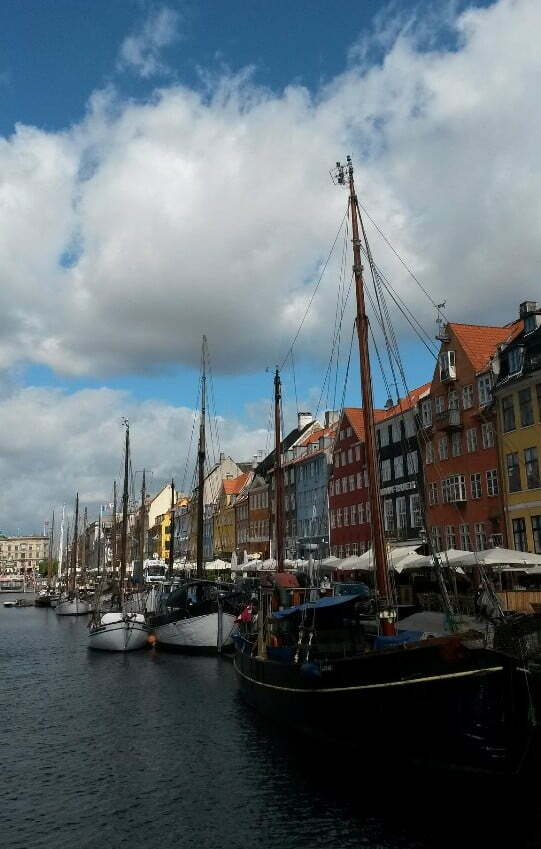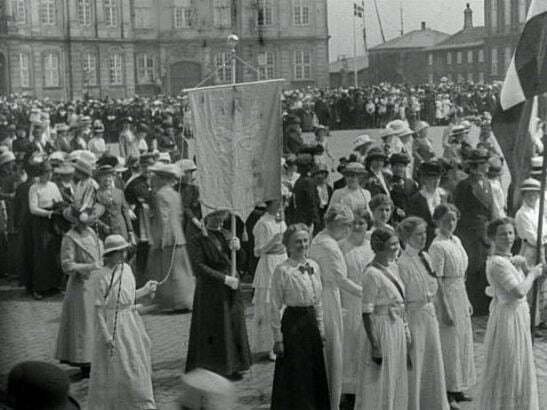
I’m just back from Copenhagen, a city that I’ve been to four times now in as many years. No complaints about that – it’s a city of great charm and calm. It’s a place through which to drift on an even tenor. The streets are intriguing, the shops (frequently with basement-level windows) are inviting, the people welcoming. Wandering through you are struck by how very much it is not like The Killing or The Bridge or other such Scandi-noir programmes. The Danes must syphon all their angst into into television broadcasts and return to the streets relieved, and at peace.
A typical Copenhagen experience was the Distortion festival. This bills itself as “a week of Emerging Dance Music and Orchestrated Chaos” in which the young of the city reclaim the streets and party to loud music. We passed them as they sat neatly at benches down one street, shivering a bit in the cool evening, awaiting drinks. Then while we were in our restaurant the crowds gathered in squares and the music was turned up (though not so loud that we could hear it much through the restaurant windows). But when we emerged around 11pm the streets were largely deserted. Young Danes need to rebel, but they also like to tidy up behind them and to get a good night’s sleep.

I was in Copenhagen for a workshop on newsreels held at the Danish Film Institute. While I was there we were taken round an exhibition that marked the 100th anniversary of women getting the vote in Denmark. The highlight was a film of the ceremonies that marked the occasion, on 5 June 2015. It was made by Julie Laurberg and Franziska Gad, which immediately grabbed attention because there just weren’t that many women making news or documentary films at that time (a few more were involved in fiction films). Who were they? Well thanks to Wikipedia I can tell you that Julie Rasmine Marie Laurberg (1856–1925) was a Danish photographer and strong supporter of women’s rights, who ran a renowned photography business in Copenhagen with her former pupil Franziska Gad (1873–1921), of whom less seems to be known (could she be of the same family as Danish film director Urban Gad, husband of Asta Nielsen?). The company was called Julie Laurberg & Gad and are credited as such at the end of the film.
They are unlikely to have operated the cameras themselves – two cameramen can be seen in the film, though they could be working for a newsreel – and I don’t know this was an one-off or if they made other news or documentary films. But Grundloven was clearly an event that demanded documenting by someone so committed to women’s rights. Grundloven is the name of the Danish constitution, and every time a change is made to the constitution a new version is published. In 1915 the major element was the granting of the vote to women, three years ahead of the United Kingdom, though two years behind Norway – and eight years behind Finland (and, yes, twenty-two years behind New Zealand).

It is a plain film of people in procession watched by crowds, with much cheering when the monarch goes by. Women suffragists are seen dressed in white, processing slowly while bearing banners and flags. The film displays a profound sense of happiness, of a settlement upheld by all and embedded in the national sense of belief. It can’t have been quite like that in actuality, of course, and the film is noticeably divided between the crowds and processors of mostly women in the first half, and the mixed crowds cheering the carriage bearing King Christian X in the second half. But a settlement is a settlement, and this is a settled film, capturing the moment in the way that only film can do, with its mixture of formality and the occasional clumsiness of unplanned reality. It is a film of great charm and calm.
The film can be found on the Danish Film Institute’s outstanding bi-lingual website (Danish/English), where you can find huge amounts of information on Danish film past and present, the Danish filmography, a special section on Carl Th. Dreyer, and a great many video clips. Do take a look.
Links:
- I wrote a post on women’s suffrage and early film for my Bioscope blog a few years ago – Suffragettes before the camera